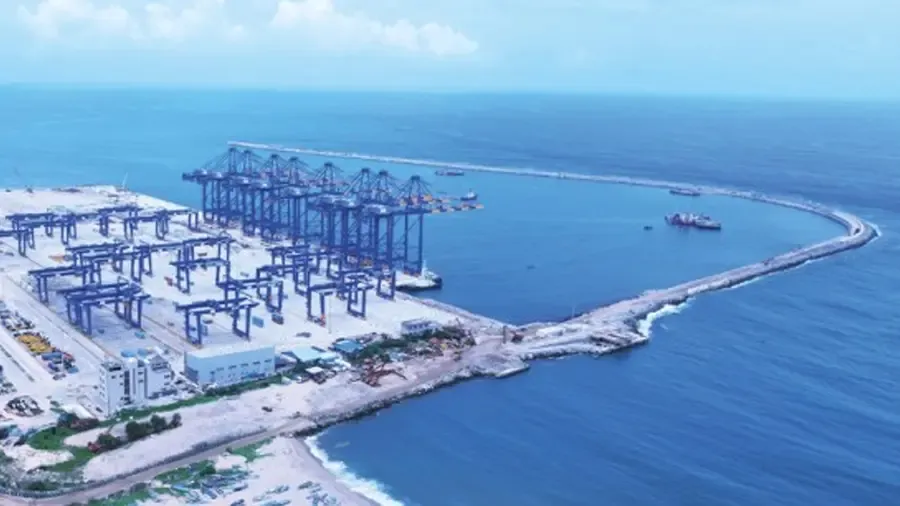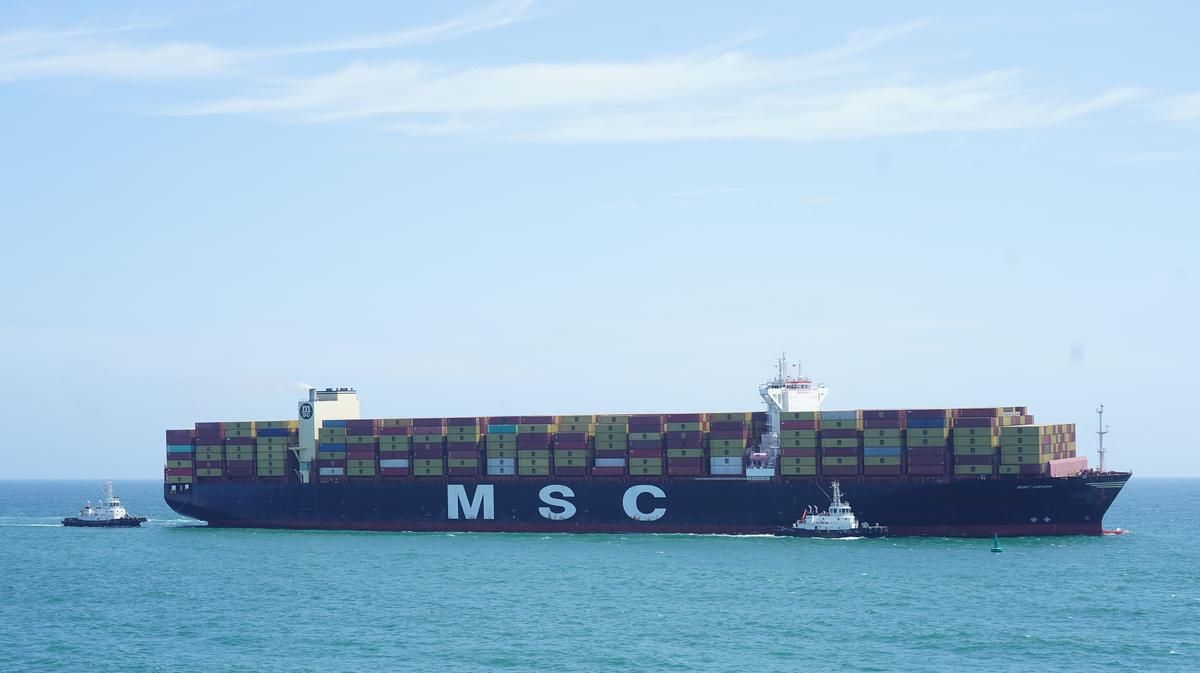Vizhinjam Port: Kerala's Gateway to Global Maritime Trade and Economic Growth

The first mother ship San Fernando arrives at Vizhinjam International Seaport, marking a new chapter in Kerala’s emergence as a global maritime hub

Anjali Ganga
Published on Mar 08, 2025, 06:33 PM | 8 min read
Thiruvananthapuram: On July 11, 2024, the arrival of the first container ship, San Fernando, at India’s first transshipment port, Vizhinjam International Seaport in Kerala, marked the beginning of Kerala’s emergence on the global maritime trade map. Less than eight months later, on March 7, 2025, the port celebrated another significant milestone as it welcomed its 200th vessel, A S ALVA. With long-term projections indicating that the port will generate a total of 2,15,000 crore over the next 36 years, Kerala’s share of the revenue is estimated at 35,000 crore. Although the Kerala government will start receiving financial benefits once the port is fully operational, this is expected to begin around 2029. In February 2025, Vizhinjam Port topped container movement among East-South ports in India, surpassing Chennai Port, and is now only behind Nhava Sheva and Mundra. The port is set to reach its maximum capacity within its first year and will become the leader in container movement once the next phase is complete.

Vizhinjam Port: From Vision to Reality in Kerala’s Maritime Growth
The construction of Vizhinjam Port in Kerala began with proposals in the 1980s due to its strategic location for international maritime trade. After several feasibility studies in the 1990s and early 2000s confirmed its potential, the Kerala government approved the project in 2005. In 2015, a public -private partnership (PPP) agreement was signed with Adani Ports to develop the port. Construction began in December 2015, although delays occurred due to factors like Cyclone Okchi in 2017. The port completed its trial operations in 2023, handling over 100,000 TEUs. Full commissioning is expected by 2028, with plans for expansion to enhance capacity and accommodate larger vessels.
The Left Democratic Front (LDF) has played a pivotal role in bringing the Vizhinjam Seaport to life, with efforts spanning multiple administrations, from V S Achuthanandan’s tenure to Pinarayi Vijayan’s leadership. Initially conceived as a critical infrastructure project to boost Kerala’s economy, the plan for Vizhinjam Seaport faced several hurdles, including land acquisition issues and environmental concerns. Groundwork was laid during Achuthanandan’s time as Chief Minister, and the project was fast-tracked despite opposition. The real momentum came under Pinarayi Vijayan’s government, which ensured the smooth execution of the project by overcoming legal and logistical challenges. Under his leadership, the LDF government secured the necessary funding and support, ensuring the project was completed with the Adani Group’s involvement in managing the port. The efforts of the LDF to realise the vision of Vizhinjam as a central global maritime hub reflect a strong commitment to Kerala’s growth, transforming the port into a significant player in international shipping.
The Vizhinjam International Seaport is poised to become a central hub for global maritime trade, with significant capacity projections upon full commissioning. The port is designed to handle up to 6 million TEUs (Twenty-Foot Equivalent Units) annually and manage around 20 million tons of cargo annually. With a deep-water draft of 18 meters (potentially expanding to 20 meters in the future), the port can accommodate the world’s largest container ships. The port’s infrastructure allows it to handle massive vessels, such as those in the MSC GULSUN category, which can carry up to 23,756 TEUs and 197,500 tons of cargo. As part of its long-term plans, Vizhinjam will expand its capacity by adding new terminals and infrastructure upgrades, positioning it as a competitive global transhipment hub in South Asia.

Vizhinjam Port Sets Sail into Global Trade: A Landmark Moment with MSC’s JADE Service
Vizhinjam Port has marked a major milestone in its journey by being included in the Mediterranean Shipping Company’s (MSC) prestigious JADE service, the largest shipping company in the world. This addition elevates Vizhinjam’s status on the global trade map, positioning it as a key player in international shipping. As a result, Vizhinjam is set to become the premier destination for shipping in South Asia, offering enhanced global connectivity and boosting international trade.
MSC, known for its excellence in container shipping and logistics, selects ports for its services based on factors like cargo volume and the capacity to handle large vessels. The JADE service operates across major ports worldwide, connecting them through well-established strategic routes. Vizhinjam Port’s growing significance in global shipping is underscored by being included in this network.
Understanding the JADE Service
MSC, headquartered in Geneva, operates in over 155 countries and maintains more than 260 trade routes. The JADE service is one of its key global routes, linking ports across Asia, Europe, and Africa. The route stretches from the Cape of Good Hope in South Africa, through Europe, and to key Asian ports such as Qingdao (China), Busan (South Korea), Ningbo Zhoushan (China), Shanghai (China), Yantian (China), and Singapore, before arriving at Vizhinjam. This connection showcases Vizhinjam’s rising prominence and growing global trade role.
Previously, goods arriving in India from overseas were unloaded at smaller ports nationwide. However, with the inclusion of Vizhinjam in the JADE service, international cargo will first dock at Vizhinjam Port before being distributed to other parts of India via smaller vessels. This shift will place Vizhinjam at the heart of South Asia’s trade and logistics network, ensuring swift and secure regional exchanges.
The inaugural vessel on this route, the MSC MIA, arrived at Vizhinjam Port on Friday. This massive ship travelled from ports like Qingdao, Busan, Ningbo Zhoushan, Shanghai, Yantian, and Singapore before reaching its destination in Vizhinjam. From there, it will continue its voyage to Valencia, Spain, then Barcelona Port, and finally end its journey at Gioia Tauro Port in Italy.
MSC GULSUN Class Ships: Engineering Marvels
MSC’s fleet includes the massive MSC GULSUN class ships, which are designed with cutting-edge technology and systems. Measuring 399.99 meters in length, 62 meters in width, and with a draft of 16 meters, these ships have an impressive capacity to carry up to 23,756 TEUs and a weight capacity of 197,500 tons. These vessels are equipped with world-first innovations, including installing 24-container decks and advanced safety features such as a dual-tower fire protection system to ensure secure transport.
The inclusion of Vizhinjam in the JADE service and the arrival of these state -of -the -art vessels marks a significant leap forward in the port’s development and solidifies its role as an essential hub in the global trade network. This achievement is a testament to Vizhinjam’s progress and its growing stature on the international stage.

Unequal Support: The Central Government’s Approach to Vizhinjam Port Development
The perceived double standard by the Central Government in the development of Vizhinjam International Seaport has been a topic of controversy. Critics argue that while the Central Government has supported other major ports with substantial funding and infrastructure development, Vizhinjam has not received the same level of attention or support, despite its potential to boost India’s maritime trade.
One of the key concerns is the delay in granting crucial financial assistance and approvals. While the Kerala government has been actively involved in developing the port through a Public- Private Partnership (PPP) with Adani Ports, the Central Government’s involvement has been minimal.
Additionally, there have been criticisms regarding the Central Government’s reluctance to implement policies that could benefit Vizhinjam, such as tax incentives or enhanced connectivity to other regions of India. The slow pace of clearance for infrastructure projects, such as road and rail connections crucial to the port’s success, has further fueled this perception of double standards.
The Kerala government’s stance on the central government's request for Viability Gap Funding (VGF) repayment for the Vizhinjam Port project has sparked controversy. Initially, the central government allocated 817.80 crore as VGF for the project, but later imposed a condition requiring repayment through a share of the port's profits, which Kerala strongly opposes. Chief Minister Pinarayi Vijayan wrote to Finance Minister Nirmala Sitharaman, urging the VGF to be released without the repayment requirement, arguing that it would place an unfair financial burden on the state, potentially costing Kerala 10,000 to 12,000 crore. Vijayan emphasized that similar projects did not have such repayment clauses and highlighted the national benefits of the Vizhinjam Port. Port Minister V N Vasavan echoed this view, calling the VGF a right of the state and expressing disappointment with the central government’s stance, even suggesting that the issue could be escalated to Prime Minister Narendra Modi if necessary. The central government's insistence on the repayment condition has sparked allegations of a discriminatory and vindictive attitude towards Kerala, further straining relations between the state and central governments. Critics argue that such a financial imposition undermines the spirit of federal cooperation, especially considering the significant role Vizhinjam is set to play in India’s maritime trade.










0 comments